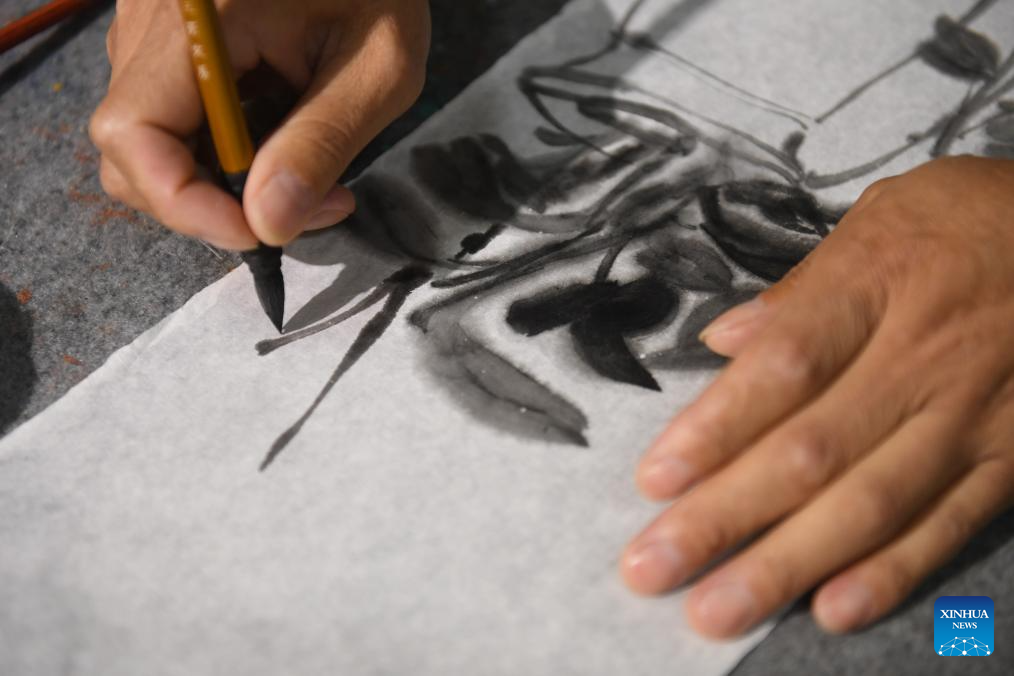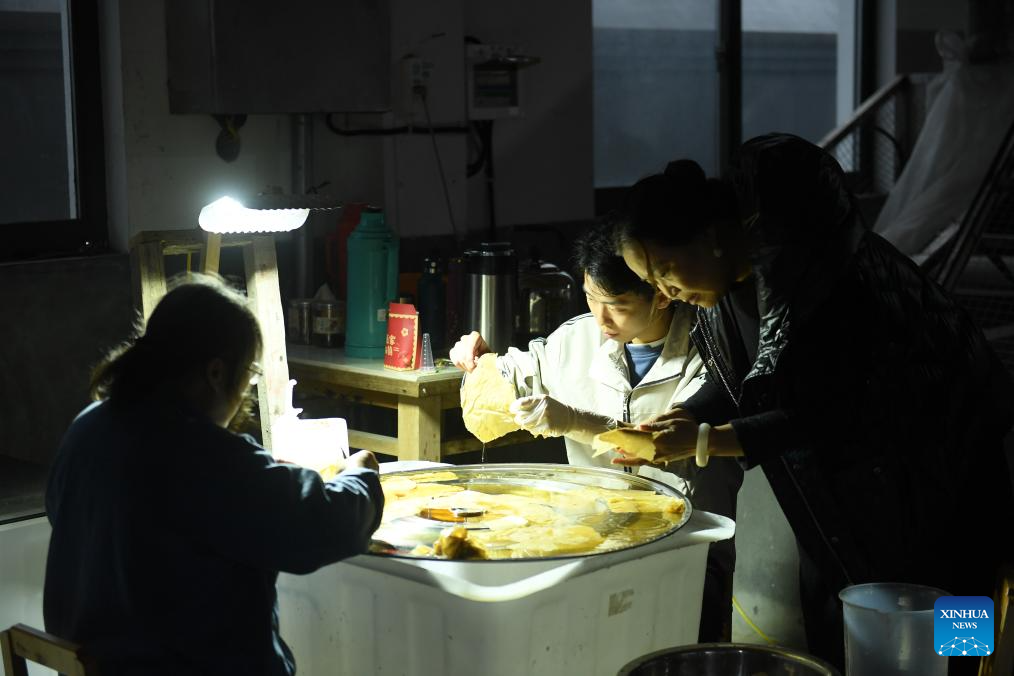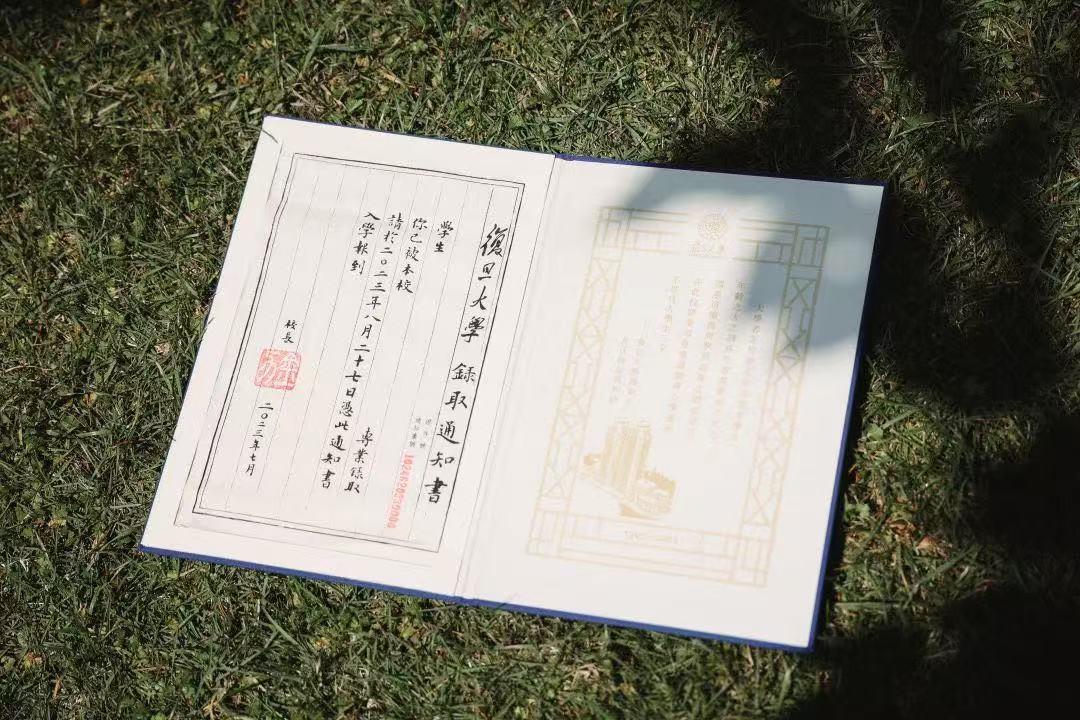
 Print
Print
Artisan revives, carries forward ancient Kaihua paper in E China's Zhejiang
2024/10/31 14:58
Origin:People's Daily Online



Huang Hongjian makes Kaihua paper. (Photo courtesy of the interviewee)
Kaihua paper, originating in the Tang (618-907) and Song (960-1279) dynasties and known for its thin yet sturdy quality, was once reserved for royal use in ancient times.
Nearly extinct, this traditional paper has been successfully revived by dedicated artisans and professionals, and is now utilized in various applications.
Huang Hongjian, an inheritor of the provincial-level intangible cultural heritage of Kaihua paper making techniques in east China's Zhejiang Province, is among those dedicated to preserving this ancient craft.
"The raw materials used in Kaihua paper are a blend of various components, and the techniques involved are more intricate compared to other papermaking methods," explained Huang.
Transitioning from a novice to a skilled artisan, Huang's passion for reviving Kaihua paper led him to immerse himself in the art of papermaking.
To enhance his knowledge and skills in the craft, Huang sought guidance from experienced artisans in neighboring regions as well as in the provinces of Jiangxi and Anhui. These interactions deepened his understanding of Kaihua paper.

Huang Hongjian paints on a piece of paper he made at his studio in Kaihua county of Quzhou, east China's Zhejiang Province, Nov. 9, 2023. (Xinhua/Weng Xinyang)
Subsequently, he began his own attempts at papermaking, but encountered challenges. It was not until 2013, when he came across an ancient book crafted from Kaihua paper at the Zhejiang Library, that he realized the stark disparity in quality between his creations and the authentic Kaihua paper from ancient times.
Determined to improve, Huang delved into extensive research by studying books on papermaking techniques and local annals. Additionally, he ventured into the mountains to study various plant species and conducted numerous experiments to refine his craft.
Due to the oral nature of passing down papermaking techniques in ancient times, Huang faced numerous challenges in his quest to revive Kaihua paper. In a significant breakthrough around 2014, he identified a plant called canescent wikstroemia as a key material used in the papermaking process. This plant, known for its toxicity, serves as a natural deterrent against pests, and is now cultivated outside a Kaihua paper workshop in Kaihua county.
With support from the local government, Huang established a Kaihua paper traditional craft research center. In 2015, a team of professionals from Fudan University collaborated with the research center.
Two years later, Yang Yuliang, an academician from the Chinese Academy of Sciences (CAS) and former president of Fudan University, spearheaded the creation of a dedicated workstation for the revitalization of Kaihua paper. The involvement of university teams injected new energy into the efforts to revive Kaihua paper.
At the end of 2016, a sample of Kaihua paper crafted by Huang underwent testing, revealing that its technical specifications closely resembled those of ancient Kaihua paper.

People work at Huang Hongjian's studio in Kaihua county of Quzhou, east China's Zhejiang Province, Nov. 9, 2023. (Xinhua/Weng Xinyang)
Currently, Kaihua paper has obtained multiple patents in over 20 categories and 20,000 to 30,000 sheets of Kaihua paper are produced annually. The paper is purchased by institutions such as the National Library of China and the Hangzhou branch of the China National Archives of Publications and Culture to protect and restore ancient texts.
In March 2023, Huang was invited by Fudan University to customize a batch of special paper for the school's admission letters. "We sent six paper samples to Fudan University and produced over 600 sheets of Kaihua paper in a specific size in just over a month," Huang said.

Photo shows the admission letter of Fudan University. (Photo courtesy of the official WeChat account of Fudan University)
This year, Fudan University has once again chosen Kaihua paper for its admission letters. "We made some refinements compared to last year, introducing a slightly yellow hue and a softer texture, enhancing its elegance," said Huang.
Huang sees this as a chance to broaden the applications of Kaihua paper, enabling it to penetrate new markets and garner increased recognition and admiration.
Now, Kaihua paper is not only used for the restoration of ancient texts and calligraphy paper but has also inspired exquisite cultural and creative works, making its mark on the international stage.
| Xinhua | China Plus
Copyright ? CCEDN.COM.CN. All Rights [京ICP備2024049485號-1] Tel: 0086-10-88820521

